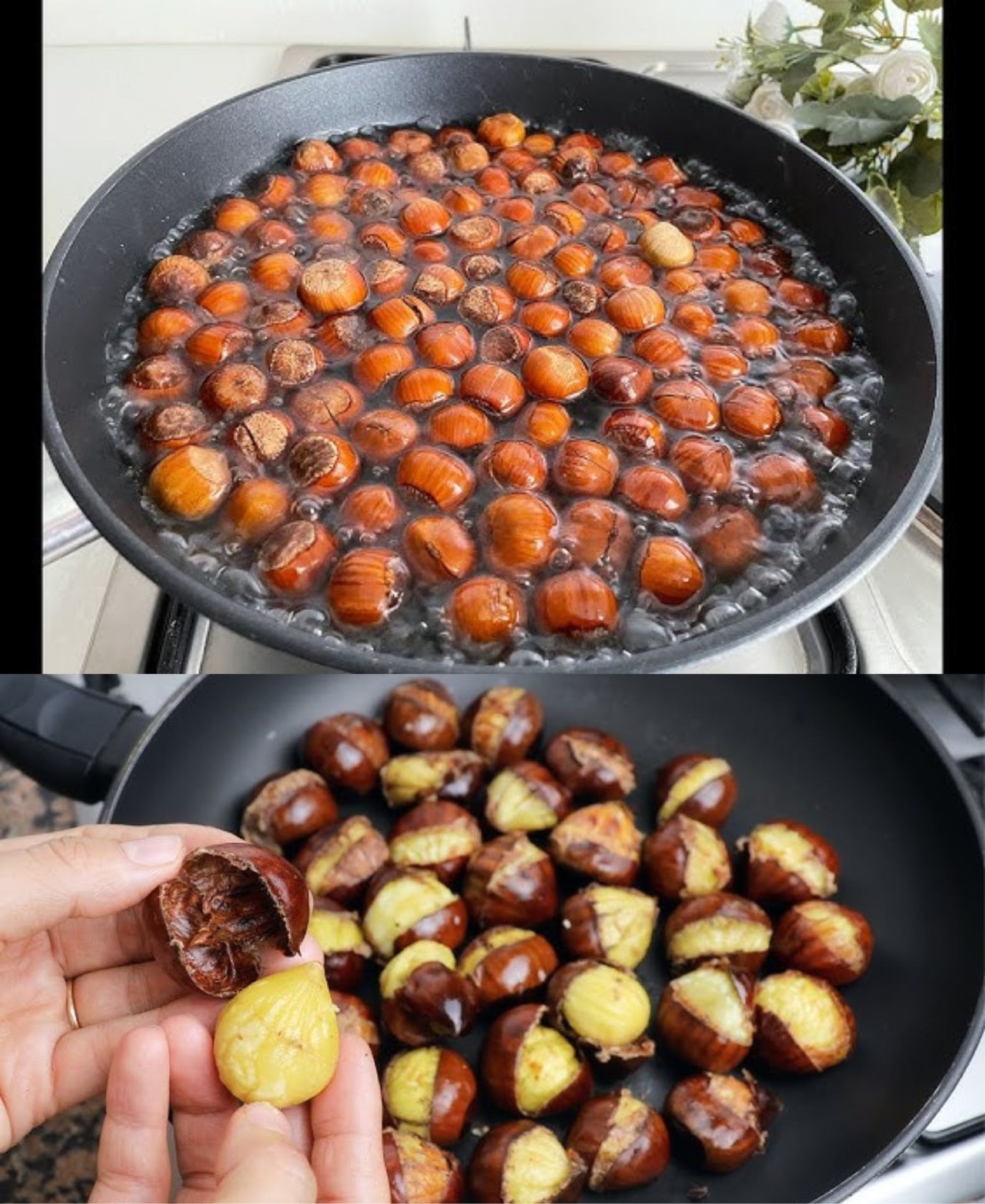ADVERTISEMENT
- Soak the Chestnuts
To get tender chestnuts, start by soaking them in a large bowl of water for about an hour. This step helps soften the shell, making them easier to cook and easier to peel. - Drain and Dry the Chestnuts
After soaking, drain the chestnuts well and dry them with a clean cloth. It is important to remove excess water to maintain the right consistency during cooking. - Score the Chestnuts
Using a sharp knife, make small horizontal incisions on the shell of each chestnut. This will allow the boiling water to penetrate during cooking, making the peeling process easier. Be careful not to cut too deeply to avoid damaging the fruit inside. - Boil the Chestnuts
Bring a pot of water to a boil and add the incised chestnuts. Let them cook for about 45 minutes. For an extra taste, you can add a drizzle of olive oil, a little oregano and a pinch of coarse salt. These ingredients will perfume the chestnuts and make the shell easier to remove. - Drain and Let the Chestnuts Cool
After boiling them, drain the chestnuts and let them cool for a few minutes. Place them in a bowl and cover them with a clean cloth, letting them rest. This way, the steam will help keep the chestnuts soft, making peeling even easier. - Peel the Chestnuts
Once the chestnuts have cooled slightly, it is time to peel them. If you have followed all the steps correctly, you will see that peeling them is quick and easy. The shell will come off easily, leaving the chestnuts ready to eat, tender and tasty.
How to Serve Boiled Chestnuts
Boiled chestnuts are delicious hot or cold and can be served in many different ways. They are perfect as a light snack or as an accompaniment to sweet or savory dishes. For an aromatic flavor, you can add a pinch of cinnamon; to enrich an autumn soup, boiled chestnuts are ideal.
Storing Boiled Chestnuts
If you have prepared more chestnuts than necessary, you can store them for a few days in the refrigerator in an airtight container to maintain their freshness. Before eating them, reheat them slightly in a bain-marie or in the oven to regain their original flavor.
The Benefits of Boiled Chestnuts vs. Roasted Chestnuts
Boiling chestnuts instead of roasting them is a quick and convenient way to enjoy this fall snack. Boiling requires no special equipment, cooks the chestnuts in a short time, and makes them easy to peel. Additionally, boiling chestnuts reduces the use of fat and preserves nutrients, making them a healthy alternative to traditional roasted chestnuts.
The Nutritional Benefits of Chestnuts
Chestnuts are rich in vitamins, especially vitamin C and B vitamins, and provide essential minerals.
ADVERTISEMENT




